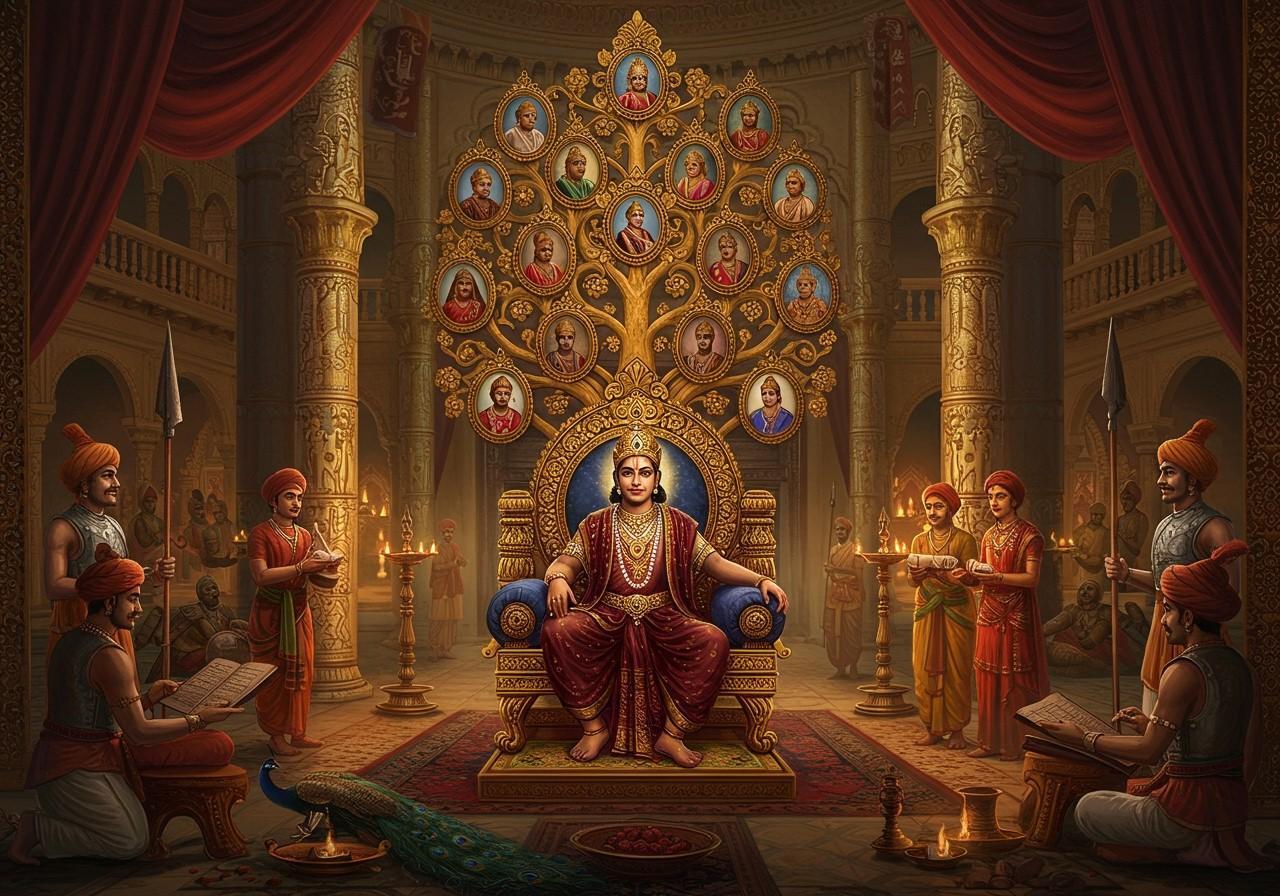
The Vardhana Dynasty, also known as the Pushyabhuti Dynasty, holds a significant place in the annals of Indian history. Ruling from Thanesar in the 6th and 7th centuries CE, this dynasty witnessed a period of transformation in northern India’s political and cultural landscape. This blog delves into the dynasty’s origins, notable rulers, achievements, and lasting legacy.
The Rise of the Vardhanas
Emerging after the decline of the Gupta Empire, the Vardhana dynasty established its roots in present-day Haryana. Its founder, Pushyabhuti, laid the groundwork for the dynasty’s future prominence. Pushyabhuti’s successors consolidated power and expanded the kingdom’s territories. Prabhakaravardhana, Harsha’s father, further strengthened the dynasty’s position through strategic alliances and military campaigns. He forged a strong foundation for his son’s illustrious reign.
Harsha Vardhana: The Illustrious Emperor (606-647 CE)
Harsha Vardhana, often referred to simply as Harsha, stands as the most celebrated ruler of the Vardhana dynasty. Ascending the throne after the untimely death of his brother, Rajya Vardhana, Harsha embarked on a remarkable journey of expansion and consolidation. His reign, spanning from approximately 606 CE to 647 CE, marked a golden age for the dynasty. Harsha extended the empire’s reach across much of north and north-western India, establishing a powerful and prosperous kingdom. He implemented efficient administrative systems, fostered economic growth, and promoted cultural and religious harmony.
Harsha’s Enduring Legacy
- Military Prowess and Expansion: Harsha proved to be a skilled military strategist, leading successful campaigns that expanded the empire’s boundaries and solidified his authority. He unified a vast territory under his rule.
- Patron of Arts and Culture: A great patron of the arts, Harsha supported scholars, poets, and artists, fostering a vibrant cultural atmosphere. His court became a center of intellectual and artistic activity, attracting renowned figures from across the land.
- Religious Tolerance and Promotion of Buddhism: While personally inclined towards Buddhism, Harsha maintained a policy of religious tolerance, respecting and supporting various faiths within his empire. He played a crucial role in the spread of Buddhist teachings and supported the renowned Nalanda University, a prominent center of Buddhist learning.
The Vardhana Family Tree and Key Figures
Understanding the Vardhana family tree is crucial to grasping the dynamics of the dynasty. Key figures who shaped its trajectory include:
- Pushyabhuti: The founder of the dynasty, laying the foundation for its future growth.
- Prabhakaravardhana: Harsha’s father, who significantly expanded the kingdom’s power and influence.
- Rajya Vardhana: Harsha’s brother, whose brief reign played a crucial role in the dynasty’s continuity.
- Rajyashri: Harsha’s sister, whose political alliances and marriages further strengthened the dynasty’s position.
Decline and Aftermath
Following Harsha’s death in 647 CE, the Vardhana dynasty faced a period of decline. The absence of a direct heir created a power vacuum, leading to fragmentation and the eventual dissolution of the empire. Harsha’s demise marked a turning point in northern India’s political landscape.
Historical Sources and Further Exploration
Key historical sources that shed light on the Vardhana dynasty include:
- Harshacharita: A biography of Harsha Vardhana written by his court poet, Banabhatta, providing valuable insights into his life and reign.
- Xuanzang’s Accounts: The Chinese Buddhist monk and traveler Xuanzang visited India during Harsha’s reign and left detailed accounts of the kingdom’s society, culture, and religious practices.
- Archaeological Evidence and Inscriptions: Archaeological findings and inscriptions offer valuable corroborating evidence about the Vardhana dynasty, its rulers, and its cultural achievements.
Connect with Ancient India through Poojn.in
At Poojn.in, we offer a curated selection of products that connect you with India’s rich cultural and spiritual heritage. Explore our collection of:
- Brass Idols of Deities: Discover beautifully crafted brass idols of deities revered during the Vardhana era and beyond, allowing you to bring a touch of ancient spirituality into your home. These idols serve as a tangible link to the rich religious traditions of the past.
- Traditional Puja Items: Enhance your spiritual practices with authentic puja items crafted from traditional materials. Experience the same reverence and devotion that characterized ancient rituals.
- Explore More about Ancient Indian History: Delve deeper into India’s rich past with our blog posts on ancient temples and historical sites. Discover the architectural marvels and cultural significance of these historical landmarks.
Conclusion
The Vardhana Dynasty represents a pivotal period in Indian history. From its rise under Pushyabhuti to its golden age under Harsha Vardhana, the dynasty left an enduring legacy of political stability, cultural flourishing, and religious harmony. Its impact on art, literature, and education continues to resonate today. Explore the rich tapestry of the Vardhana era and connect with India’s vibrant past.
FAQs about the Vardhana Dynasty
Who was the most famous ruler of the Vardhana dynasty? Harsha Vardhana is undoubtedly the most renowned ruler of the dynasty, known for his extensive empire, patronage of the arts, and promotion of Buddhism. His reign is considered a high point in the dynasty’s history.
What led to the decline of the Vardhana dynasty? The absence of a direct heir after Harsha Vardhana’s death created a power vacuum, leading to the fragmentation of the empire and its eventual decline. This marked a significant shift in the political landscape of northern India.
What are some key historical sources for learning about the Vardhana dynasty? Important sources include the Harshacharita by Banabhatta, accounts by the Chinese traveler Xuanzang, archaeological findings, and inscriptions from the period. These provide valuable insights into the dynasty’s history and culture.


